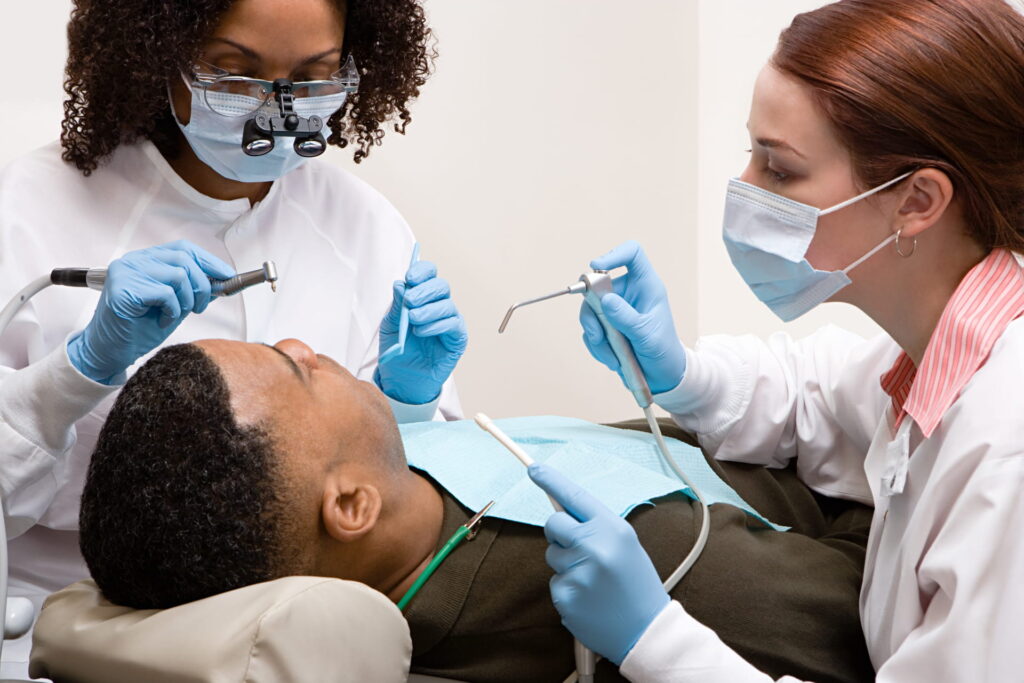Maintaining strong teeth and healthy gums requires consistent care beyond daily routines. How frequently someone visits the dentist depends on a blend of personal habits, health history, and daily choices, making it a far more individualized decision than many expect. Life stages, medical conditions, and even financial constraints can reshape the recommended visit schedule. The Dental Krewe explains, “Building a dental care plan around your specific risks helps catch small issues before they escalate, protecting both your smile and overall health.”
1. Dental history shapes dental visits
Previous dental challenges greatly influence how often appointments should happen. People who’ve faced repeated cavities, gum treatments, or restorative procedures usually benefit from shorter intervals between visits because old issues can return unexpectedly. Someone managing crowns, implants, or past infections often requires more thorough monitoring to avoid expensive fixes later.
- The CDC reports that nearly 90% of adults will face tooth decay during their lifetime.
- Past gum disease significantly increases future infection risks and potential tooth loss.
- Restorative procedures like bridges and implants depend on routine checkups for long-term success.
2. Oral hygiene habits influence dental schedules
Daily hygiene routines directly affect how often professional cleanings are necessary. Thorough brushing, attentive flossing, and rinsing with effective mouthwash reduce plaque and bacteria, but occasional lapses create pathways for buildup and decay. Even those with good habits sometimes overlook problem spots where tartar develops quickly.
- ADA research highlights that flossing daily removes bacteria and food particles that brushing misses.
- Plaque hardens into tartar within 24 to 72 hours and only a dentist can remove it.
- Toothpaste with fluoride helps reinforce enamel, providing defense against acid erosion.
3. Gum disease risk increases dental visits
Gum health plays a major role in determining the need for more frequent dental appointments. Early signs of gum trouble can be subtle, progressing into periodontitis without causing immediate discomfort, which makes early detection crucial. Smokers, people with diabetes, and those with weakened immunity face increased risk and require proactive care.
- The CDC reports nearly half of adults over 30 show signs of gum disease.
- Smoking weakens the body’s natural ability to fight infection, causing rapid gum deterioration.
- Diabetics face persistent inflammation and slower healing, raising the odds of gum-related complications.
4. Age affects how often dental checkups are needed
Different stages of life create shifting dental needs and visit schedules. Children experience fast tooth development, often needing extra monitoring for cavities or alignment issues. Older adults deal with gum recession, weakened enamel, and dry mouth caused by medications, all of which increase dental risks.
- NIDCR data shows 42% of children aged 2-11 have cavities in their baby teeth.
- Seniors face increased vulnerability to root decay as gums pull away from teeth.
- Orthodontic patients require regular visits to adjust appliances and monitor shifting teeth.

5. Diet and lifestyle habits raise dental care needs
Dietary choices and personal habits strongly affect oral health outcomes. Frequent consumption of sweets, starchy snacks, or acidic beverages accelerates tooth decay and enamel wear. Smokers, frequent coffee drinkers, or anyone consuming energy drinks regularly may need extra cleanings to manage staining and prevent gum issues.
- CDC data shows almost half of U.S. adults consume sugary drinks daily, increasing tooth decay risk.
- Smokers are twice as likely to develop severe gum disease, according to the American Academy of Periodontology.
- Acidic foods weaken enamel, raising the risk of cavities and sensitivity.
6. Medical conditions increase dental monitoring
Chronic medical issues often complicate oral health and require more frequent dental visits. Conditions like diabetes, osteoporosis, and cancer treatments impact mouth health directly, increasing the need for closer observation and timely intervention. Side effects such as dry mouth or compromised healing create an environment where infections flourish.
- NIH findings show osteoporosis weakens bone density, including the jaw, increasing tooth loss risk.
- Cancer therapies often reduce saliva production, which elevates cavity risks.
- Diabetes increases the likelihood of gum infections due to persistent inflammation and poor circulation.
7. Insurance coverage and financial concerns influence visit frequency
Cost and coverage heavily shape how often individuals seek professional dental care. Many insurance plans cover preventative cleanings twice per year, but when out-of-pocket expenses grow, some people delay or skip necessary visits. Others use community programs or dental schools for reduced-cost services when facing financial challenges.
- ADA research confirms financial barriers are the leading reason adults avoid dental care.
- Standard insurance plans usually cover preventative services but often limit specialized treatments.
- Dental savings programs and local clinics help reduce care costs for uninsured patients.
Finding the balance for long-term oral health
No two dental care plans look the same because personal health factors and habits demand custom solutions. People with steady routines and few risk factors may see their dentist less often, while others face a tighter schedule due to lifestyle or medical issues. The Dental Krewe stresses the value of staying ahead of potential problems, reminding patients that consistent, well-timed dental care avoids complex treatments down the road.

Key Takeaways About Dental Visit Frequency
- History of cavities or restorative dental work demands more frequent visits.
- Reliable oral hygiene reduces dental appointments but requires consistency.
- Smoking, diabetes, and immune challenges increase gum disease risks.
- Sugary, acidic diets and tobacco use trigger the need for extra cleanings.
- Chronic conditions like osteoporosis or cancer impact oral health significantly.
- Costs and insurance limits shape how often people can afford professional dental care.
Frequently Asked Questions About Seeing a Dentist
Can skipping dental visits impact more than my mouth?
Yes, poor dental health links directly to heart disease, stroke, and diabetes complications according to the CDC.
Is visiting twice yearly enough for everyone?
No, people with higher risks like gum disease or medical conditions may need appointments every three or four months.
Does dental insurance cover major treatments?
Most plans cover cleanings but limit support for complex procedures such as crowns, implants, or root canals.
How does aging increase dental risks?
Older adults often experience gum recession, root exposure, and dry mouth, all of which raise the risk of cavities and tooth loss.
Why schedule dental visits if I have no symptoms?
Silent dental problems develop without pain; skipping visits lets minor issues turn into serious, expensive treatments.











